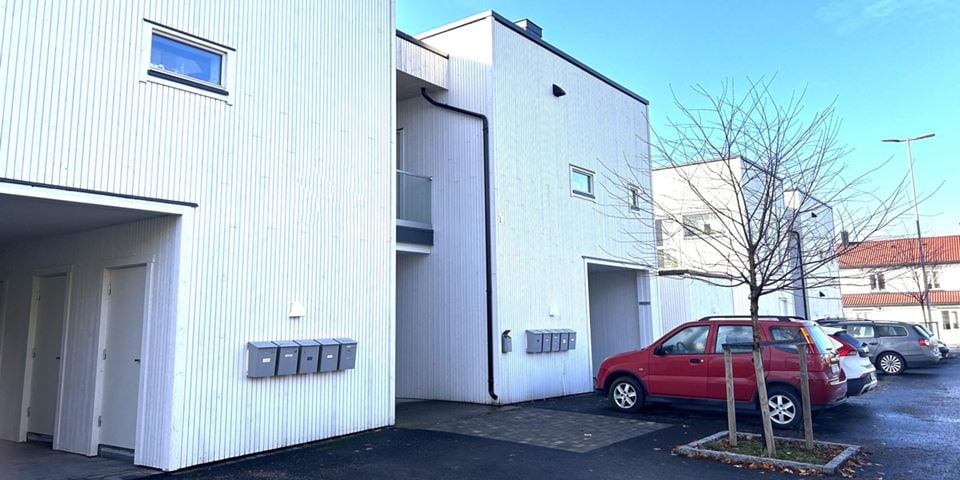Our homes are key to our social and material well-being, and not least for our children’s upbringing and social development. But many families with young children are unable to get a leg onto the ordinary housing ladder, either as homeowners or tenants.
Many Norwegian municipalities are currently working to identify new housing alternatives for families that for different reasons are unable to get a home of their own. Since 2015, a pilot scheme has been running in Ringsaker that allows families to become tenants under so-called affordable housing allocation (AHA) schemes.
Key facts: How an AHA agreement works
AHA agreements are based on the Norwegian State Housing Bank (Husbanken) offering favourable financing terms to a developer on condition that the same developer enters into a 20-year agreement with the local municipality. Under such an agreement, the municipality obtains the right to allocate 40 per cent of the homes being built by the developer to low-income families, who become tenants of the landlord/developer under standard leasing terms.
Researchers at SINTEF and the INN University of Applied Sciences in Hamar (HINN) have been gathering data to investigate the impact that AHA schemes have on the quality of life of the low-income tenant families involved.
Two different models
By examining the experiences of different families, researchers have obtained insights into how AHA schemes impact on their independence, ability to manage, and sense of community belonging.
“We see that while these families require assistance to rent a home, they also display a commitment to improve the quality of their lives by obtaining security, stability and the best possible future for their children”, explains SINTEF researcher Karine Denizou.
As part of their study of the AHA scheme in Ringsaker, the researchers are extending their work by running comparisons with a separate study of an ‘Ownership-First’ model that has been operating in Kongsvinger. Here, the municipality selected a number of families who were given financial support from the Norwegian Labour and Welfare Administration (NAV) to purchase a home. These were families that municipal officials recognised had the potential to participate in educational and employment initiatives that would help them to develop independence and social sustainability.
“We’re finding that families involved in both schemes say that their quality of life has been improved”, says Denizou. “At the same time, we’re seeing that the tenant families in Ringsaker, to a much greater extent than the homeowners in Kongsvinger, appear to be encountering problems when it comes to housing stability and community belonging”, she says.
Mixed results
Most families living under the AHA scheme say that they enjoy living close to the town centre, with only a short walk to the kindergarten, schools, work, the shops, buses and other facilities. Many are experiencing less overcrowded living conditions, which offer them better opportunities for privacy, school work, and a sense of family coherence in connection with meals and other activities, and not least when friends come calling.
“They find it a positive experience living in a more modern, well-designed, apartment, with the feeling of living like other people do”, says Professor Anne Sigfrid Grønseth at HINN. “Living in a ‘normal’ neighbourhood makes them feel less stigmatised and marginalised”, she says.
But they also say that some aspects of housing quality are inadequate. Their complaints address issues such as awkward floor plans, misaligned doors or kitchen drawers that are always getting stuck. Aspects such as unattractive outdoor areas or noise from the neighbourhood also contribute to reduced living quality in some housing projects.
Many families also experience complaints and difficulties in their communities, such as being singled out as ‘foreigners’ who ‘don’t fit in’, or who are made to feel that they are ‘inferior’ to their other neighbours.
Many move away
For many of these families, lower housing costs are more important than the quality of housing. They would rather move into lower quality social housing than pay a higher rent. Others prefer to save for their own homes, and/or to have more money for other things such as supporting their children’s recreational activities.
Families living under AHA schemes make up a large and complex category, most of whom have histories as refugees. This can make it difficult to establish their motives for moving.
“We can imagine that these families have high hopes for the future and are motivated to participate more actively in their communities, achieve empowerment and boost their quality of life”, says Grønseth. “This may be why they see it as particularly important to save to buy their own homes”, she says.
When we compare outcomes from the AHA model in Ringsaker with the Ownership-First scheme in Kongsvinger, it seems that many of the families in the former scheme would also be ideal candidates for the latter.
“At the same time, we see many indications that home ownership in itself is not necessarily the most important factor. Instead, it seems that it is the opportunity to choose where they live and the quality of living associated with home ownership that gives families a feeling of greater community participation, empowerment and a sense of belonging”, says Grønseth.
Some of the families who have been given the chance to own their own homes also have a refugee background. The reason for offering them assistance lies in a belief that it will make it easier for them to succeed in participate in education and working life, thus enabling them to pay off their mortgages.
Municipalities need more housing support options
It appears that the AHA model performs poorly when it comes to meeting residents’ need for stability.
“The reasons for this are complex”, says Denizou. “But our results indicate that rents are perceived as too high, both by the residents themselves and Ringsaker municipality. In fact, they can be so high that the scheme is no longer affordable for the residents it is designed to help.”, she says.
Renting under the AHA scheme is a less resource-demanding form of housing support compared with the Ownership-First model. At the same time, a good deal of monitoring is required. Ideally this should take place out of sight of residents’ neighbours and other third parties.
For municipal employees, it is not always easy to find the right balance.
“Our findings indicate that resources end up being dedicated to monitoring families in unintended ways, especially when we find that many move away and find themselves requiring additional assistance. Such findings should have implications for future application of the AHA model in practice”, says Denizou.
Overall, the municipality needs a greater diversity of housing support options. AHA schemes offer an important supplement, but the municipality also requires more traditional social housing units. This will offer the municipality greater flexibility when assisting those families facing the biggest challenges.
“Involving residents in the development of an inclusive residential community should be a task for which the landlord and the municipality assume joint responsibility”, says Denizou. “Boosting opportunities for participation and involvement in local activities may help towards generating a sense of community belonging”, she says.
More stability for home owners
Problems linked to moving and a lack of stability are not so relevant among those who have received support to own their homes.
“In our study in Kongsvinger, we’re finding that the families are pleased to tell us how they are establishing a home by making their own adaptations”, says Grønseth. “They experience a greater sense of participation and equal worth within their communities. We’re also monitoring the future development of these families with a sense of hopeful anticipation. After all, they don’t as yet have much experience of the challenges of home ownership”, she says.
There are many indications that the Ownership-First model is best suited to smaller municipalities and rural districts. The Ringsaker project serves to demonstrate that AHA schemes are ideal outside areas free of housing pressures, partly because there is access to centrally-located land available at acceptable prices.
Solid basis for more research
The results of this study may provide a solid basis for the development of nationwide surveys looking into the question of renting versus ownership for low-income families.
“More data about how the municipalities work in both the planning and project stages will be useful for the involved parties and the State Housing Bank alike”, says Denizou.
Two aspects are of particular interest:
- The role of the municipalities in allocating housing under AHA schemes. This role is key to determining how well the new homes are adapted to local housing and social requirements, as well as the diverse needs of individual residents. This role is still in its infancy, and more research is needed to examine the scope of action available to the municipalities.
- The role of the municipalities in the planning phase. Difficulties arise when it comes to predicting not only the housing needs of resident groups and the various municipalities in 20 years’ time, but also what will happen to the housing currently allocated under AHA schemes when current agreements with the landlords expire. For example, it will be relevant in this context to look into whether the AHA model can be combined with other housing initiatives such as ‘rent-to-ownership’ schemes.
References:
Anne Sigfrid Grønseth, Karine Denizou, Sigrid Elisabeth Glomdal and Svein Åge Kjøs Johnsen: Utleieboliger med tilvisingsavtale: Hvilken betydning har boligene for livskvaliteten til familier med lav inntekt? (Renting under affordable housing allocation schemes: what significance do such homes have for the quality of life of low-income families? / in Norwegian). SINTEF akademisk forlag, 2023.
Karine Denizou, Anne Sigfrid Grønseth, Åshild Lappegard Hauge and Mary Ann Stamsø: Eie først – Barna først. Hvilken betydning har selveid bolig for livskvaliteten i lavinntektsfamilier? (Ownership first – Children first. What significance does home ownership have for the quality of life of low-income families? / in Norwegian). SINTEF akademisk forlag, 2022.


